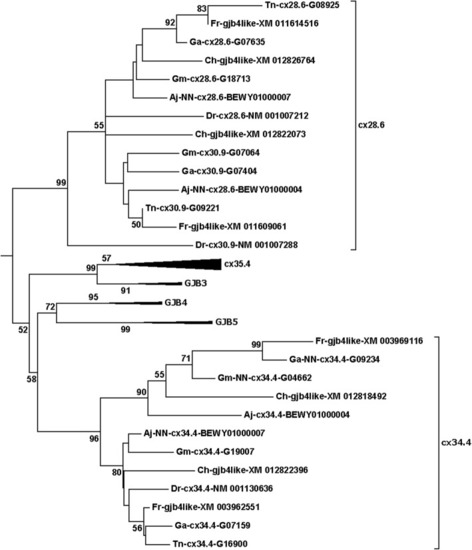|
GJB3/GJB4/GJB5 related sequences from the compressed tree shown in Fig. 1. This is an example where teleost sequences with the same names are found in clearly distinct branches of the tree. In this case, four Fugu (Fr) and four herring (Ch) sequences are called gjb4like. Two sequences from each species located into each of the two groups here called cx28.6 and cx34.4. Note also that mammalian GJB4 and GJB5 were always found as a dichotomous pair, and that cx34.4 never mixed into the dichotomous GJB4/GJB5 pair (Suppl. Table 1). Similarly, cx28.6 generally split off at the foot of the collected GJB3/GJB4/GJB5/cx35.5/cx34.4 clade, but in a few cases (with poorer statistics) was positioned closer to GJB3/cx35.4 (Suppl. Table 1). Thus, there is no evidence to support cx28.6 or cx34.4 being more closely related to GJB4 than to GJB5 as the naming (gjb4like) could suggest. See legend of Fig. 2 and Methods section for details about naming of the sequences
|

